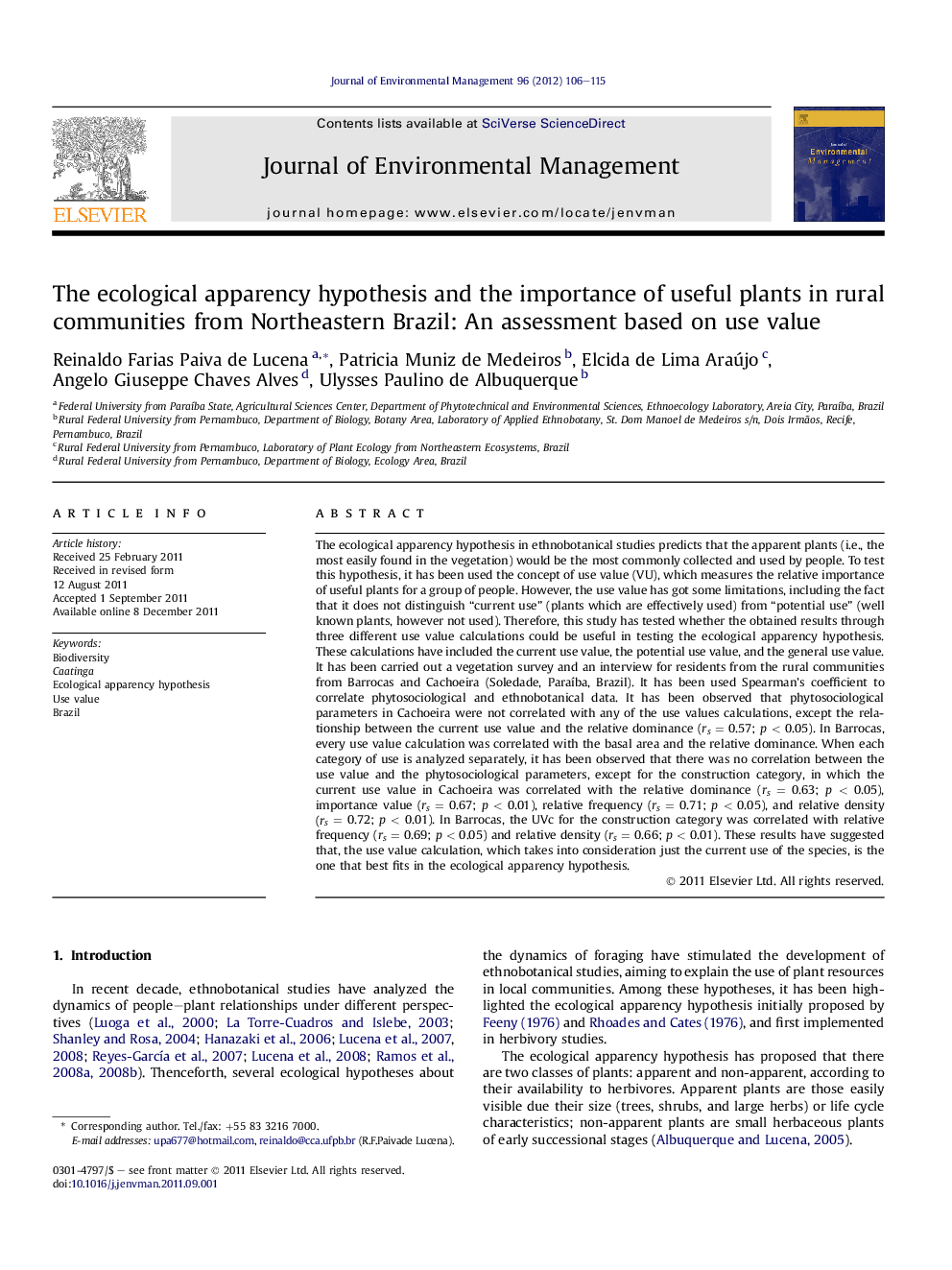| Article ID | Journal | Published Year | Pages | File Type |
|---|---|---|---|---|
| 1056893 | Journal of Environmental Management | 2012 | 10 Pages |
The ecological apparency hypothesis in ethnobotanical studies predicts that the apparent plants (i.e., the most easily found in the vegetation) would be the most commonly collected and used by people. To test this hypothesis, it has been used the concept of use value (VU), which measures the relative importance of useful plants for a group of people. However, the use value has got some limitations, including the fact that it does not distinguish “current use” (plants which are effectively used) from “potential use” (well known plants, however not used). Therefore, this study has tested whether the obtained results through three different use value calculations could be useful in testing the ecological apparency hypothesis. These calculations have included the current use value, the potential use value, and the general use value. It has been carried out a vegetation survey and an interview for residents from the rural communities from Barrocas and Cachoeira (Soledade, Paraíba, Brazil). It has been used Spearman's coefficient to correlate phytosociological and ethnobotanical data. It has been observed that phytosociological parameters in Cachoeira were not correlated with any of the use values calculations, except the relationship between the current use value and the relative dominance (rs = 0.57; p < 0.05). In Barrocas, every use value calculation was correlated with the basal area and the relative dominance. When each category of use is analyzed separately, it has been observed that there was no correlation between the use value and the phytosociological parameters, except for the construction category, in which the current use value in Cachoeira was correlated with the relative dominance (rs = 0.63; p < 0.05), importance value (rs = 0.67; p < 0.01), relative frequency (rs = 0.71; p < 0.05), and relative density (rs = 0.72; p < 0.01). In Barrocas, the UVc for the construction category was correlated with relative frequency (rs = 0.69; p < 0.05) and relative density (rs = 0.66; p < 0.01). These results have suggested that, the use value calculation, which takes into consideration just the current use of the species, is the one that best fits in the ecological apparency hypothesis.
► We used three different calculations of use-value to test the ecological apparency hypothesis. ► These calculations included the current use value, potential use value, and general use value. ► The current use-value calculation is the best suited to reveal relationship between the relative importance of a resouce and its apparency.
